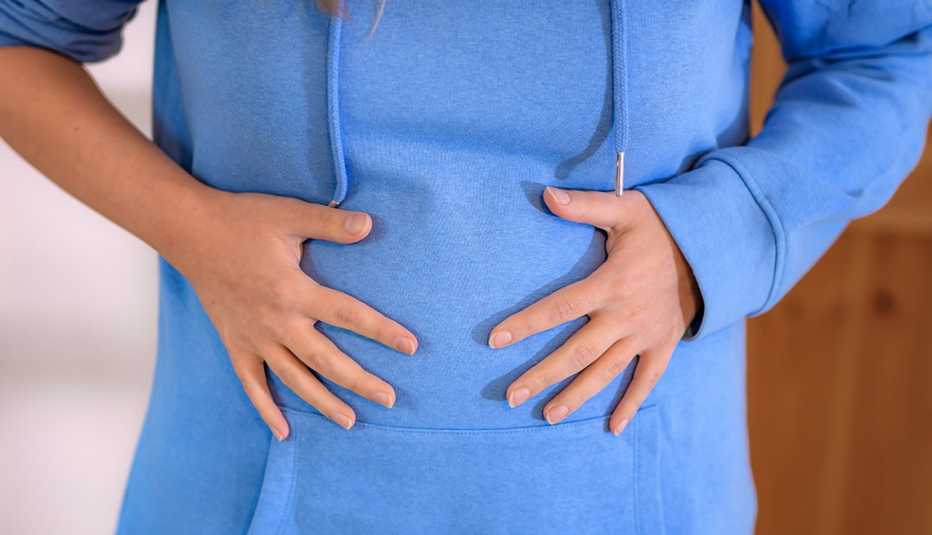AARP Hearing Center


What is going on with your waistband? Is it tight because you are bloated and overfull from a fiber-heavy meal, or is it the upshot of midlife weight creep?
Both bloating and belly fat are common problems for people over age 50, when digestion slows, and people naturally lose muscle mass and bone density.
Age-related digestive changes and common issues such as constipation can trigger bloating symptoms, according to Sandra J. Arévalo Valencia, director of community health and wellness at Montefiore Nyack Hospital in Nyack, New York. Recurrent bloat can hamper your quality of life. “It gives you discomfort, gas, sometimes even pain,” she says.
Yet, bloat may be easier to accept than belly fat.
“Especially when you're over 50, and you're in denial about needing to lose weight, you might think that you're not overweight, you're just bloated,” says Arévalo Valencia, who is also a spokesperson for the Academy of Nutrition and Dietetics.
Belly fat creep
Like it or not, most older adults tend to gain a little weight with each year that passes. While they may know the serious health risks linked to with visceral or belly fat, including metabolic diseases, high blood pressure and diabetes, they may not immediately recognize their own gain in girth.
Multiple factors, such as alcohol intake, sedentary lifestyle, or eating highly processed foods can contribute to both belly problems.
Before you tackle the problem properly, be sure to identify it.
What’s the difference between bloat and belly fat?
“Bloating is either a feeling of uncomfortable fullness, or an actual visible distension of your abdomen, because of something going inside your digestive tract,” explains Tamara Duker Freuman, a New York-based dietitian whose practice focuses on the dietary management of digestive and metabolic diseases. “Maybe it's too much poop in your colon, maybe it's because you have a lot of gas,” she says, noting that the symptoms may come and go.
Fat doesn't change unless you lose weight, according to gastroenterologist Mark Pimentel, M.D., executive director of the Medically Associated Science and Technology (MAST) Program at Cedars-Sinai Medical Center. “You wake up with the same amount of material on your front of your stomach each day.”



































































More on Health
To Get a Better Workout, Play Like a Kid
The perks of making your exercise routine fun8 Things to Do at 50+ to Help You Live Longer
It’s never too late to make small changes to improve your health
Losing Weight Can Be Good for Your Heart
And the benefits stick around, even if some weight is regained